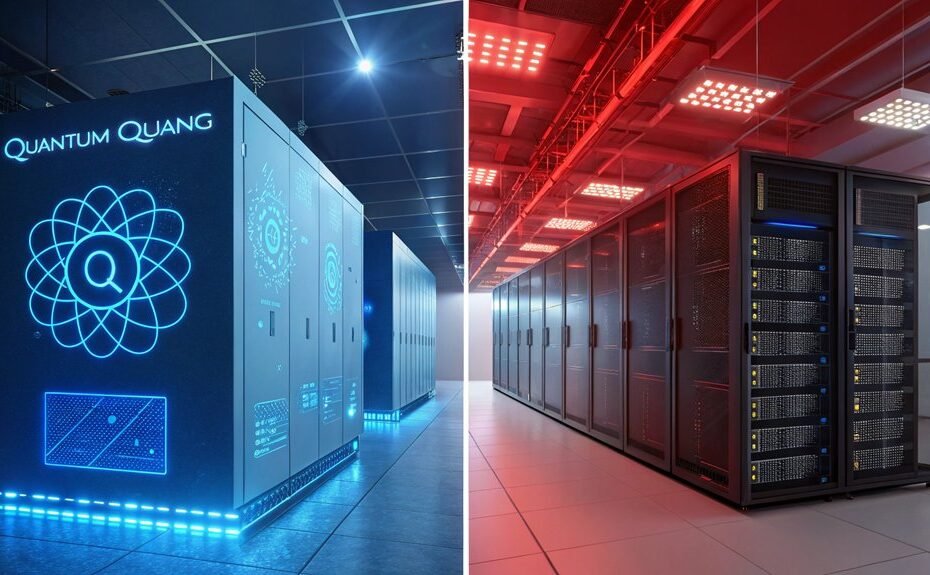Artificial Intelligence (AI) and Machine Learning (ML) differ in seven key aspects spanning scope, methodology, and application. AI represents broad technology simulating human intelligence through reasoning and decision-making, while ML functions as its subset focused on data-driven pattern recognition. AI employs diverse approaches including rule-based systems, whereas ML relies specifically on algorithmic learning from datasets. Their distinct implementation processes and industry applications reflect varying levels of computational advancement and data requirements. Further exploration reveals the nuanced technological frameworks defining each field.
Although artificial intelligence (AI) and machine learning (ML) are often used interchangeably, these technologies represent distinct levels of computational advancement in modern technology. AI encompasses a broader scope of technologies designed to replicate human intelligence across various domains, including problem-solving, reasoning, and complex decision-making.
Machine learning, operating as a specialized subset of AI, focuses specifically on systems that learn and improve from data analysis and pattern recognition. Customer experience has shown remarkable improvement with 25% satisfaction growth projected by 2023 in organizations implementing AI solutions.
The fundamental difference lies in their objectives and methodologies. AI systems aim to simulate human-like intelligence through multiple approaches, including rule-based systems, neural networks, and natural language processing.
ML systems, conversely, concentrate on developing algorithms that permit computers to learn from and make predictions based on data, utilizing specific techniques such as supervised and unsupervised learning methods. Data dependency levels significantly differentiate these technologies, with ML requiring extensive datasets while AI systems can operate with varying data requirements.
Implementation processes likewise differentiate these technologies. AI projects typically require integration of multiple advanced technologies and systems, while ML implementations focus on selecting appropriate algorithms and training them with carefully prepared datasets.
The scalability challenges faced by both technologies differ, with AI confronting complexity in replicating human-like reasoning, while ML struggles with data quality and model optimization.
Their applications across industries reveal distinct roles. AI powers sophisticated systems like virtual assistants and autonomous vehicles, leveraging multiple technologies to perform complex tasks.
ML applications tend toward more focused objectives, such as predictive maintenance, demand forecasting, and fraud detection, where pattern recognition in data drives specific outcomes.
The learning mechanisms between AI and ML also differ considerably. AI systems can incorporate various learning methods, including but not limited to machine learning, while ML systems specifically learn through data analysis and pattern recognition.
This distinction influences how each technology adapts and improves over time, with AI potentially utilizing multiple learning approaches while ML remains focused on data-driven improvement.
The impact of these technologies extends across diverse sectors, from retail and banking to healthcare and transportation. AI transforms industries through broad automation and innovation capabilities, while ML facilitates more targeted improvements in specific operational areas.
As these technologies continue to evolve, their integration becomes increasingly sophisticated, although their fundamental differences remain clear regarding scope, methodology, and application.
Most-Asked Questions FAQ
Can AI or Machine Learning Systems Develop Genuine Emotional Connections With Humans?
AI systems cannot develop genuine emotional connections with humans. While they can simulate emotional responses through programmed behaviors, they lack the capacity to truly feel or reciprocate emotional attachment.
How Much Electricity Do AI and Machine Learning Operations Consume Globally?
AI and machine learning operations consume substantial electricity globally, with data centers using 0.5-2% of world electricity, projected to reach 8-21% of global power consumption by 2030.
What Programming Languages Are Best for Beginners Learning AI Development?
Python stands as the best starting language for AI beginners because of its simple syntax, extensive libraries, and strong community support, followed by R for statistical analysis.
How Do Quantum Computers Affect the Future of AI Processing?
Quantum computers exponentially accelerate AI processing through parallel computations, enabling complex problem-solving, augmented data analysis, and improved machine learning capabilities beyond classical computing limitations. This advancement revolutionizes AI development and applications.
Can AI Systems Be Completely Secure From Hacking or Unauthorized Access?
Complete security from hacking remains impossible for AI systems because of inherent vulnerabilities in data processing, model architectures, supply chain risks, and the evolving nature of cyber threats.
